Herbo-mineral formulation 'Ashwashila' attenuates rheumatoid arthritis symptoms in collagen-antibody-induced arthritis (CAIA) mice model
- PMID: 31142786
- PMCID: PMC6541602
- DOI: 10.1038/s41598-019-44485-9
Herbo-mineral formulation 'Ashwashila' attenuates rheumatoid arthritis symptoms in collagen-antibody-induced arthritis (CAIA) mice model
Abstract
Rheumatoid arthritis (RA) is a chronic inflammatory autoimmune disorder that affects joints of hands and feet and introduces injury in secondary organs such as cardiac tissue. In the present study, we induced RA in male Balb/c mice (CAIA) using collagen-antibody cocktail (C-Ab) and lipopolysaccharide intraperitoneal injections. Induction of RA in the animals was detected through the loss of body weight, food, and water consumption, pedal edema, increased arthritis score of the paw and ankle, increase in radiological and histological lesion score of ankle and knee joints and enhanced pain perception in the C-Ab induced RA animals. Ashwashila is a herbo-mineral medicine from Indian Ayurvedic system. Human equivalent doses of Ashwashila (ASHW) and standard of care, Methotrexate were given to the CAIA animals for two weeks. ASHW treatment significantly reversed the effect of C-Ab with reduced pedal edema, arthritis score, radiological and histological lesion scores in ankle-joint, knee-joint and articular cartilage, reduced pain perception. These effects were comparable with the Methotrexate treatment. In human monocytic (THP-1) cells, ASHW was found to be biocompatible at in-vitro test doses. The anti-arthritis mechanism of action for ASHW was established through the suppression of pro-inflammatory cytokines such as IL-1β, IL-6, TNF-α; and upstream regulator, NF-κB. Taken together, we show the pre-clinical efficacy of ASHW in reducing RA associated symptoms by controlling inflammation and suggest it as a potential therapeutic candidate for rheumatoid arthritis.
Conflict of interest statement
The authors declare no competing interests.
Figures
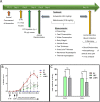
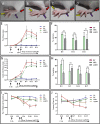
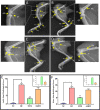
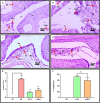

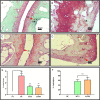
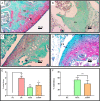


Similar articles
-
Anti-Inflammatory and Anti-Arthritic Efficacies of an Indian Traditional Herbo-Mineral Medicine "Divya Amvatari Ras" in Collagen Antibody-Induced Arthritis (CAIA) Mouse Model Through Modulation of IL-6/IL-1β/TNF-α/NFκB Signaling.Front Pharmacol. 2019 Jul 1;10:659. doi: 10.3389/fphar.2019.00659. eCollection 2019. Front Pharmacol. 2019. PMID: 31333447 Free PMC article.
-
Sinomenine Inhibits the Progression of Rheumatoid Arthritis by Regulating the Secretion of Inflammatory Cytokines and Monocyte/Macrophage Subsets.Front Immunol. 2018 Sep 26;9:2228. doi: 10.3389/fimmu.2018.02228. eCollection 2018. Front Immunol. 2018. PMID: 30319663 Free PMC article. Clinical Trial.
-
Polyphyllin I Ameliorates Collagen-Induced Arthritis by Suppressing the Inflammation Response in Macrophages Through the NF-κB Pathway.Front Immunol. 2018 Sep 27;9:2091. doi: 10.3389/fimmu.2018.02091. eCollection 2018. Front Immunol. 2018. PMID: 30319603 Free PMC article.
-
Th17 Cells in Immunopathogenesis and treatment of rheumatoid arthritis.Int J Rheum Dis. 2013 Jun;16(3):243-53. doi: 10.1111/1756-185X.12132. Int J Rheum Dis. 2013. PMID: 23981743 Review.
-
A mechanistic insight of phytoestrogens used for Rheumatoid arthritis: An evidence-based review.Biomed Pharmacother. 2021 Jan;133:111039. doi: 10.1016/j.biopha.2020.111039. Epub 2020 Nov 28. Biomed Pharmacother. 2021. PMID: 33254019 Review.
Cited by
-
Traditional and Complementary Approaches in Combating Central Sensitisation of Pain in Osteoarthritis: Trends and Advances.Ann Neurosci. 2025 Aug 9:09727531251357658. doi: 10.1177/09727531251357658. Online ahead of print. Ann Neurosci. 2025. PMID: 40792283 Free PMC article.
-
Anti-Inflammatory and Anti-Arthritic Efficacies of an Indian Traditional Herbo-Mineral Medicine "Divya Amvatari Ras" in Collagen Antibody-Induced Arthritis (CAIA) Mouse Model Through Modulation of IL-6/IL-1β/TNF-α/NFκB Signaling.Front Pharmacol. 2019 Jul 1;10:659. doi: 10.3389/fphar.2019.00659. eCollection 2019. Front Pharmacol. 2019. PMID: 31333447 Free PMC article.
-
Enhancing Prednisone-Based Arthritis Therapy with Targeted IL-27 Gene Delivery.Bioengineering (Basel). 2022 Jun 9;9(6):248. doi: 10.3390/bioengineering9060248. Bioengineering (Basel). 2022. PMID: 35735491 Free PMC article.
-
Herbal Decoction Divya-Peedantak-Kwath Alleviates Allodynia and Hyperalgesia in Mice Model of Chemotherapy-Induced Peripheral Neuropathy via Modulation in Cytokine Response.Front Pharmacol. 2020 Oct 30;11:566490. doi: 10.3389/fphar.2020.566490. eCollection 2020. Front Pharmacol. 2020. PMID: 33324205 Free PMC article.
-
Phytochemicals as Immunomodulatory Molecules in Cancer Therapeutics.Pharmaceuticals (Basel). 2023 Nov 26;16(12):1652. doi: 10.3390/ph16121652. Pharmaceuticals (Basel). 2023. PMID: 38139779 Free PMC article. Review.
References
Publication types
MeSH terms
Substances
LinkOut - more resources
Full Text Sources
Other Literature Sources
Medical

